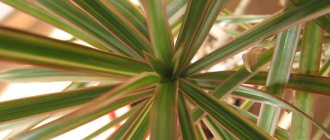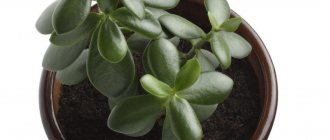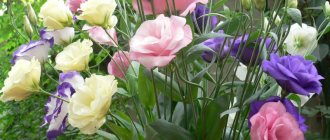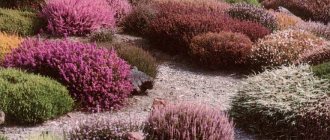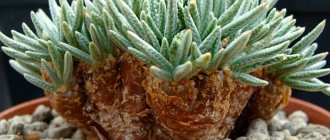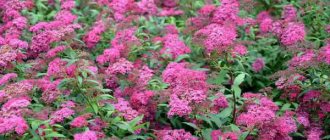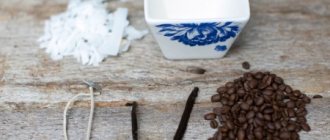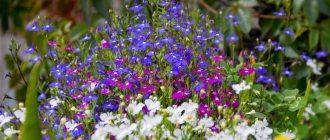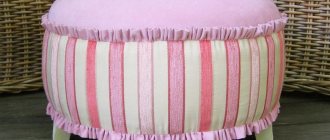- October 16, 2018
- Houseplants
- Lyudmila Sinitsyna
Kalanchoe is one of the most popular indoor plants. It is used in folk medicine and is called a house doctor. A large number of different species are known. The question often arises about what medicinal Kalanchoe looks like. What conditions must be created for its normal growth? What can be done to prolong the flowering of certain types of Kalanchoe? What should you consider when propagating a plant?
Description
There is often controversy about what the Kalanchoe plant looks like. The fact is that this genus has about 200 species, it amazes with its diversity. They differ in size. These can be huge plants up to four meters high or graceful bushes barely reaching 20 cm. Not only the size of the leaves varies, but also their shape and color: from rich green to almost blue. Differences also relate to the structure of the stem, shape and color of flowers.
Types of indoor Kalanchoe
Several species are especially popular in indoor floriculture. Each of them can become a real decoration of any room. You can see what Kalanchoe looks like when it blooms further in the article. All plants can be roughly divided into flowering and non-flowering species.
Kalanchoe varieties that do not bloom:
- Felt.
- Laciniata (dissected or lobulated).
Flowering species of Kalanchoe:
- Blossfeld.
- Beharskoe.
- Fiery.
- Terry.
- Bryophyllum.
- Tube-flowered.
- Rosaline.
Both are popular. In addition, all plant varieties are classified into decorative and medicinal. The latter include, in particular, Kalanchoe Degremona and pinnate. Each plant is beautiful in its own way. To decide which one to prefer, you need to know what Kalanchoe looks like. Photos along the text will help.
Stimulating flowering
If a three-year-old plant does not bloom, then you need to analyze the reasons for the delay in the budding period. These include:
- Improper watering - drying out of the earthen clod or its waterlogging. Irrigation should be regular and gentle so as not to cause root rot.
- Excess or lack of lighting - on unshaded windows, leaves can get sunburned, and in a dark room they can stretch out and die.
- Excessive fertilizing - the more often you fertilize a plant, the more energy it will spend on processing useful substances, and not on the formation of flower buds.
- Disproportional daylight hours - Kalanchoe needs less than ten hours of “sleep”.
If all these factors are absent, and the plant still does not bloom, then methods of stimulating this process are used. Conventionally, they can be divided into:
- artificial - by spraying with Ovary and Bud preparations;
- natural - by reducing daylight hours: in the evening after 17.00 the plant is covered with a cardboard box, and in the morning no later than 7.00 it is removed.
With this exposure, the crop begins to actively form flower buds. After budding has finished and the flowers have fallen off, the Kalanchoe should be allowed to rest in a cool room with seven hours of daylight.
Blossfeld
Kalanchoe Blossfeld is one of the most common Kalanchoe species in indoor floriculture. You can find out what the plant looks like by looking at the photo. This is a very compact Kalanchoe, no more than 30 cm in height. The leaf blade is rounded, with jagged edges. There are varieties with a thin red line along the edge. The plant blooms from the beginning of winter until the end of the spring season.
Contraindications to the use of Kalanchoe
People with diseases of the liver, kidneys and joints should be more careful when treating Kalanchoe. There may be allergic reactions in nursing and pregnant women (during pregnancy it is generally advisable to refrain from treatment with this method).
Before use, it is better to consult a doctor, especially for people prone to allergies. Also, you should not use the plant juice for low blood pressure, tumors, or hepatitis.
Note! In its pure form, Kalanchoe is not suitable for children, because the child may have a burn to the nasal mucosa. It is best to test for allergic reactions before use to avoid unwanted effects.
All medications, even if they are natural, should be used after consultation with a doctor; this is a prerequisite for treatment.
Kalandiva
This subspecies of Kalanchoe Blossfeld stands out among the others for its beautiful flowers, long-lasting and abundant flowering. The plant is very decorative at any time of the year. It has leathery leaf blades of a beautiful green color. In the photo you can see what Kalanchoe Kalandiva looks like and, using the knowledge you have gained about care, grow a flower. In the spring, the plant is literally covered with a cap of buds. The flowering period is long. When creating optimal conditions for the plant, you can admire such a “bouquet” for six months.
Mangina
This type of Kalanchoe is also called African bells. In its natural environment, the plant grows only in Africa. The inflorescences resemble bells. Flowering begins at the very end of spring. The stems are flexible, thin, the leaves are oval and small in size. Overall a fairly compact bush.
You can find out what this variety of Kalanchoe looks like by looking at the photo above. In nature, you can find specimens with pink, orange, and red flowers.
Cirrus
Beginning gardeners often ask the question of what Kalanchoe pinnate looks like. It is distinguished by more complex leaves, which can be bright green, light green, or purple. In nature it grows up to two meters in height; in indoor conditions the dimensions are certainly more modest. Drooping large flowers have a purple or rich red hue.
Features of the plant: resident of the subtropics
In nature, Kalanchoe is found in Australia, America and Asia - in tropical regions. The plant is adapted to both long-term exposure to drought and to survival in high humidity. Kalanchoe does not need frequent replanting or feeding.
This houseplant is famous for its resilience. If an indoor flower begins to rot or disappear, there is a chance to save it. You can divide the plant into cuttings - it can easily be propagated with the help of “kids”.
Degremona
Degremona is the most popular variety, which is known to almost everyone. The plant is loved by gardeners due to its unique medicinal properties. This type of Kalanchoe has oblong, dense, leathery leaves. A distinctive feature of the variety are the babies (brood buds), which are located along the edges of the leaf blades. This species is also called viviparous, because the babies fall off and, falling on the soil, take root. Interested to know what medicinal Kalanchoe looks like? The photo is presented above.
Kalanchoe tomentosa
Felt Kalanchoe (Tomentosa) is a subshrub with an erect stem and fleshy, silver-green leaves with brown stripes along the edges. This plant is popularly called cat ears.
This plant is a low shrub no more than 0.5 m high, usually reaching a height of about 30 cm in a room. More often it is erect or slightly drooping, with a slightly woody stem and weakly branching shoots.
It is the leaves that are the main advantage of felt Kalanchoe. The leaf of this plant is fleshy and has an elongated shape, and most importantly, its entire surface is covered with a thin layer of white fluff. Because of this coating, the leaves from a distance appear not green, but bluish. A well-lit window sill is considered an excellent place for this type of Kalanchoe at home. The ideal sides are considered to be southeast and southwest.
The flowers are collected in a loose inflorescence and have a tubular shape. The umbrella-shaped inflorescence consists of small flowers with 12 mm petals and a corolla tube. A profusely flowering, highly ornamental plant, ideal for decorating rooms.
Features of care and temperature conditions
Kalanchoe does not require special growing conditions; it easily adapts to different indoor microclimates. But it’s still better to create an optimal growing environment for it. After you bring home a new plant, think about where it is best to put it. A child of the tropics, Kalanchoe loves sunlight, but direct rays can burn the leaves. Flower growers recommend leaving the plant in the sun from morning until lunch, and then shading it a little. What does a Kalanchoe flower look like? The photo is presented in the article.
Frequent ventilation is required, but a cold draft can seriously harm Kalanchoe. The plant can easily tolerate heat, the best temperature in summer is +20...+25 °C, but in winter you need to make sure that it is not colder than +15 °C, otherwise it may get sick and die.
In summer, the plant can be taken out onto the veranda, into the garden, onto the balcony and brought in only during fog and rain. In the article you will see what the flower looks like in the photo. Kalanchoe medicinal, or Degremona, is familiar to many, but species such as tomentose Kalanchoe or tubiflora are rare in our houses and apartments.
Medicinal properties of Kalanchoe
The plant contains tannins (copper, magnesium, calcium, aluminum, manganese, flavonoids), vitamin C, polysaccharides and organic acids (malic, acetic, oxalic). Thanks to this, the juice of the plant has healing properties. Kalanchoe juice is used for medicinal purposes. Tinctures and ointments are prepared from the stems and leaves.
Medicines and juice prepared from Kalanchoe are used to treat:
- burns, boils and other skin lesions;
- inflammatory processes of the oral cavity;
- colds.
Kalanchoe Medicinal properties
Proper watering and fertilization
Overmoistening is dangerous for Kalanchoe. If there is too much moisture, the roots may rot and dangerous diseases will develop. Therefore, it is important to observe moderation and know the rules of watering.
In summer and spring it should be moderate. The soil should dry out between waterings. In autumn and spring you need to reduce the amount of water; one watering every 14 days will be enough. During the cold period, you need to make sure that the water does not stagnate in the pan, this can lead to hypothermia of the plant, and it does not tolerate this well.
At any time of the year, experts recommend using settled water at room temperature. Be sure to ensure that liquid does not get on the stem, otherwise it may rot.
Kalanchoe does not require frequent feeding. In winter there is no need to do this at all. If you purchase ready-made fertilizer for succulents, half the dose indicated on the package is enough. The drug is dissolved in warm water, then the solution is cooled to room temperature and the plants are watered with it.
How to replant?
It may be necessary to replant a flower if it has grown too much or if the soil has begun to deteriorate due to drying out or too much watering. You should choose a pot not “butt-to-tail”, but so that it has a small space for roots.
You should not touch a blooming Kalanchoe; it is better to wait until the end of flowering. Otherwise, you can damage the plant and impair the nutrition of the flowers.
Transfer
The root system of the plant develops quickly, so replanting is required regularly. It is better to select containers with a wide diameter and deep enough. Plan to replant in the spring, when the plant is just starting to grow. Sometimes an urgent transplant is required if the roots begin to rot. Each time, choose a pot 3-4 cm in diameter larger than the previous one, and add drainage to the bottom. The soil should consist of a mixture of turf and leaf soil in a ratio of 3 to 2. During replanting, you need to handle the stems more carefully, they are fragile.
Reproduction
Kalanchoe can be propagated in different ways: cuttings, seeds and children. It all depends on the specific species.
The most common method is cuttings. To do this, you need to cut shoots 10-15 cm long, after which they should be dried a little. Plant the cuttings in moist soil consisting of peat and sand to a depth of 5 cm. Place the containers in a room with a temperature of +20...+25 °C.
When propagating by seeds, it is necessary to cover the soil with the crops with film. After the shoots appear, the shelter must be removed.
Kalanchoe Degremona reproduces very simply: babies grow along the edges of the leaves, there are quite a lot of them. They can simply be scattered on the surface of the soil, and new plants will appear quickly enough. Look how Kalanchoe looks in the photo with children. Isn't it interesting?
Possible difficulties
Agapanthus: planting and care in open ground
When planting a succulent in open ground, difficulties often arise in the form of climate change, the appearance of pests and diseases. Improper care will also worsen the condition of the flower.
Pests and diseases of garden Kalanchoe
If its leaves begin to turn yellow and dry out, then it is necessary to cover the bush from the sun and increase watering. The same symptoms occur when a plant becomes sick with chlorosis. It needs to be treated by spraying the above-ground part of the plant and treating the soil with a solution of iron sulfate. When drilling leaves, it is necessary to loosen the soil and reduce watering.
Of the pests, the most troublesome is aphids, which are located on leaves and shoots in the form of small green insects. The leaves of the flower begin to turn yellow and fall off. Insecticides or treatment with a soap solution will help cope with the problem.
It is necessary to plant in open ground only in summer.
Flower growers are often interested in the question about Kalanchoe: is it possible to plant a flower in open ground? The plant is exotic, accustomed to warmth, but due to its unpretentiousness it is able to grow in climatic conditions of mid-latitudes. The main thing is to replant it in time before the first frost and put it indoors for the winter.
Pruning flowering Kalanchoe species
To form a beautiful bush, the plant must be trimmed correctly. In addition, using some techniques, you can extend the flowering time.
Many gardeners make the mistake of removing flowers after flowering, but leaving the stems behind. This leads to the fact that after some time the stems begin to stretch, and the plant loses its attractiveness. This is due to the fact that the formation of new flowers is possible only on young shoots.
Experienced flower growers recommend doing things differently. During flowering, cut out the peduncle and two more leaves. Then in the future new buds will form in this place. By carrying out such events regularly, you can maintain the flowering of Kalanchoe for three months.
In order for the plant to bloom well next season, it needs to be properly prepared. After flowering there should be a period of rest. To do this, reduce watering and lower the temperature for about a month. After this, the Kalanchoe is cut so that two leaves remain at the bottom, returned to its usual place and watered. After new shoots appear, the plant is inspected. If there are too many of them, then some are removed, leaving only the strongest ones. After this, they are pinched above the third leaf. You can see what a Kalanchoe flower with a beautiful crown looks like in a flower shop. For the spring holidays, as a rule, the shelves are full of colors.
These events allow you to get a beautiful Kalanchoe bush that will bloom profusely.
Beneficial properties of kalanchoe pinnata healer in our home
Tamarix shrub - description of species and varieties
Very often in homes there is also a species such as Kalanchoe pinnate, so it is no wonder that people are interested in the medicinal properties of this plant. It is popularly called “doctor” or “room ginseng”, and this is quite justified.
The juice from the leaves has an anti-inflammatory effect and perfectly heals wounds, trophic ulcers, and burns. Usually, problem areas of the skin along the edge are pre-lubricated with a thin layer of synthomycin or furacillin ointment, and then the wound is irrigated with Kalanchoe juice from a syringe and covered with a gauze bandage generously soaked in the juice. It is fixed and left for 5 hours.
An ointment is also prepared from this medicinal plant, suitable for the treatment of bedsores, chronic inflammation of the middle ear, trophic ulcers, and non-healing wounds. Mix 2 tablespoons of fresh plant juice with 2 tbsp. spoons of anhydrous lanolin, several ground tablets of furazolidone and 5 ml of novocaine 2%. The resulting ointment is applied to a sterile bandage and applied to the wound.
Lanolin ointment is also actively used in dental, gynecological and obstetric practice.
Bedsores can also be treated by simply applying a peeled Kalanchoe leaf to them. In this case, you need to secure the bandage and leave it overnight.
For cataracts in the initial stage, apply a paste of Kalanchoe leaves to the eyelids (before bed, for an hour), then remove, but do not wash the face at night. For inflammatory eye diseases, it is recommended to instill 1-2 drops of freshly squeezed juice into each eye daily.
Crushed Kalanchoe leaves can be used for melanoma (skin cancer). This paste is mixed with apple cider vinegar (in a 1:1 ratio) and applied to the wounds as a compress.
To get rid of erysipelas, mix Kalanchoe juice and novocaine (0.5%) in equal proportions, smear a gauze bandage with the solution and apply it to the affected area of the skin. Do this 3 times a day for a week.
For ear pain and otitis, make turundas from gauze, wrap crushed leaves in each turundum and insert them into the ears at night. The mixture will draw out the pus and relieve pain.
Why does Kalanchoe lose its decorative qualities?
What to do if the plant is no longer pleasing with its appearance? The main reason for this phenomenon lies in the fact that favorable conditions were not created for it.
The main reasons for the loss of decorativeness:
- lack of light leads to elongation of shoots and yellowing of leaves;
- stagnant air can cause leaves to fall;
- direct sunlight can leave a burn on the leaves, which leads to the appearance of spots;
- insufficient nutrition slows down growth, the plant sheds its leaves;
- excess nitrogen in the soil is dangerous due to leaf curling;
- excess moisture can lead to softening of the leaves;
- root rot slowly kills the plant: tissues soften, leaves fall off;
- lack of moisture leads to wilting of leaves;
- The presence of pests may be indicated by spots on the plant.
By the appearance of the Kalanchoe, you can determine what mistakes were made during cultivation and what the plant does not like. Depending on the cause, action should be taken. It may be necessary to transplant into another container and replace the soil.
Planting Kalanchoe in open ground at the dacha
Kalanchoe feels good outdoors in the garden, subject to planting and care conditions. Used in flower beds as a solitary plant and in borders (low-growing forms).
What indoor flowers can be taken outside in summer?
Below are the features of the microclimate and agricultural technology necessary to successfully grow Kalanchoe outdoors.
Temperature regime for the plant
Outdoor Kalanchoe is planted after frosts have passed and the soil and air have warmed up sufficiently. In central Russia and the Moscow region, such conditions occur in the first ten days of June. A plant that has overwintered at home must undergo acclimatization: 2-3 days before transplanting, it is taken out into the fresh air for several hours, and on the last day it can be left overnight.
Kalanchoe tolerates air temperatures from 12 °C to 30 °C with virtually no problems. The temperature regime at which the plant is most comfortable is 16 °C to 18 °C.
Important! At extremely low and high temperatures, Kalanchoe stops growing and buds.
Air and soil humidity
The flower is not picky about air humidity. It tolerates drought well at high temperatures and excessive humidity at low temperatures.
Sensitive to substrate moisture. Watering is necessary abundant and regular. If the plant grows in partial shade, the intensity of watering should be reduced. The main thing is to ensure that the lump of earth does not dry out.
Location and lighting
Kalanchoe does not require lighting. The only thing to avoid is direct sunlight, as this can cause burns. With a strong lack of sun, the flowers of the plant will become small and inconspicuous.
Important! The flower must be provided with 12 hours of diffused lighting.
Features of feeding
Kalanchoe, like other succulents, does not respond well to foliar feeding, but responds well to root feeding.
For fertilizing, experts advise choosing complex products. They are easier to dose and contain a full range of macro- and microelements. The following ratio is considered optimal:
- 20% nitrogen;
- 8% phosphorus;
- 20% potassium.
The drug is diluted in water: 5.5 g per 2 liters. Watering is carried out twice a month. At the end of summer, the frequency of fertilizing is reduced, and by autumn it is stopped.
If, 2-3 days after fertilizing, yellow curled leaves appear on the plant, you need to stop fertilizing.
Beautifully flowering Kalanchoe is not particularly picky about fertilizers
Specifics of transplantation
Planting and replanting Kalanchoe are fairly simple procedures. The main thing is to choose a suitable place and correctly compose the soil mixture. Here is the approximate composition of the soil that needs to be filled in the holes:
- deciduous soil - 2 parts;
- turf soil - 2 parts;
- compost - 1 part;
- sand - 1 part.
Important! You need to add charcoal or expanded clay as drainage.
The mixture you prepare yourself can be replaced with purchased soil for succulents.
Diseases and treatment of Kalanchoe
This plant has fairly good immunity to diseases. Therefore, their occurrence indicates that errors were made in maintenance and care.
Kalanchoe diseases:
- powdery mildew;
- gray rot;
- leaf ring spot;
- late blight
How to save a diseased plant? If Kalanchoe often develops stem rot, this indicates that it is cold. Even in winter, the temperature should not fall below +15 °C.
Powdery mildew leaves white spots with a slight coating on the leaf blades. The cause of the disease is high air temperature with very low humidity.
Helping a plant when affected by powdery mildew:
- Isolate from other plants, as the disease easily spreads to other plants.
- Move to a cooler place.
- Increase watering.
- Spray with fungicides.
Gray rot makes the leaves sticky and has a gray coating on them. If measures are not taken in time, the plant will die.
Helping a plant affected by gray rot:
- Replant the Kalanchoe, replacing the soil.
- Provide it with the correct temperature.
- Ventilate in time.
- Treat with fungicides.
Ring leaf spot is manifested by rotting of the stem, with circular spots forming on the leaf blades. Unfortunately, it will not be possible to help the plant; it is impossible to save it.
Late blight can be recognized by a brown coating and brown spots. The most common cause of the disease is excessive watering combined with low air temperatures.
Helping a plant with late blight:
- Reduce watering.
- Don't forget to ventilate the room.
- Treat with fungicides.
Proper maintenance conditions are the key to ensuring that the plant does not get sick.
Temperature
The plant copes well with heat and cool temperatures down to 15°C. This temperature regime is the best for bud formation.
If it is exceeded or at a lower temperature, the process slows down greatly, and the buds may simply not form.
